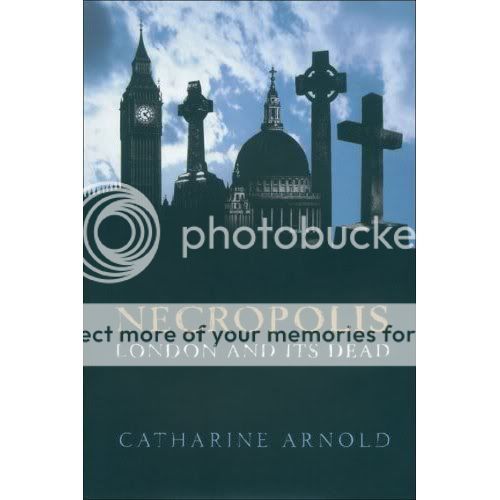Victorian Grief's Journal (original) (raw)
Necropolis: London and its Dead is a fascinating study of London's status as centuries-old burial ground, and how the city's relationship to death and its dead has played a pivotal role in its history. It begins with the Neolithic tribal settlements in the area which became the capital, moving onto Roman ritual and burial and then,in the post-Pagan centuries, the vast differences in the treatment of death via Christian belief. Medieval death, plague and the notion of ars moriendi (the art of dying well) are explored, as is the Great Fire of 1665, the population boom of the following two centuries. The crystalisation of Victorian attitudes to grief and mourning naturally take up a great deal of the book, as do the completions of the vast (then) out-of-town cemeteries such as Kensall Green and of course Highgate, after the massive scandals of the Resurrection-Men, mass burials, cholera and the public health horrors of the mid-1800s. Moving on from the nineteenth century, Arnold argues that the intricate and established cult of grief long-held in Victorian London necessarily had to alter after the mass deaths of WWI made intimate mourning and, indeed, graveside reveries, impossible and contrived in the face of rapidly advancing, agnostic modernity.
The amount of material covered in this slim paperback edition is quite staggering, but Arnold makes easy work of the vast subject matter and manages to convey a neat narrative progression throughout. She has an obvious relish for the macabre, but never falls into either of the standard-issue pitfalls when dealing with the subject of death: she neither becomes overly hammy and lighthearted, nor does she descend into the sober depths of elegy. At all times she is even-handed, engaging, critical and honest.
The Victorian period is allotted a considerable amount of space and this book would be of great interest to those interested in Victoriana. Far from revealing an especial prejudice on the part of the author, however, this merely reflects the fact that it was during the nineteenth century that the subject of death was critical from a social, cultural, political and health point of view. Proof that we take many things for granted nowadays, Arnold retells the horrors of Victorian burial: the foul, crammed churchyards, the thefts of bodies, the mass graves where decomposition was often aided with quick-lime and bodies were made to fit their 'snug' abodes via dismemberment, or unscrupulous undertakers jumping up and down upon the corpses...facts both intriguing and harrowing illuminate this book throughout. The Victorian industry of death is also examined: the importance of mourning fashion, of status, of monuments and propriety.
Fascinating throughout, I would recommend this book to anyone with even the mildest curiousity about the subject matter. It is thorough and never exploitative. You will finish reading it, as I did, and feel absolutely certain that London has a unique and sometimes ghastly relationship with its dead. To finish: did you know that part of the London Underground near Kensington veers away from its usual straight course due to the impossibility of drilling through a mass grave of plague dead on that site?...
(Cross-posted all over the place)
